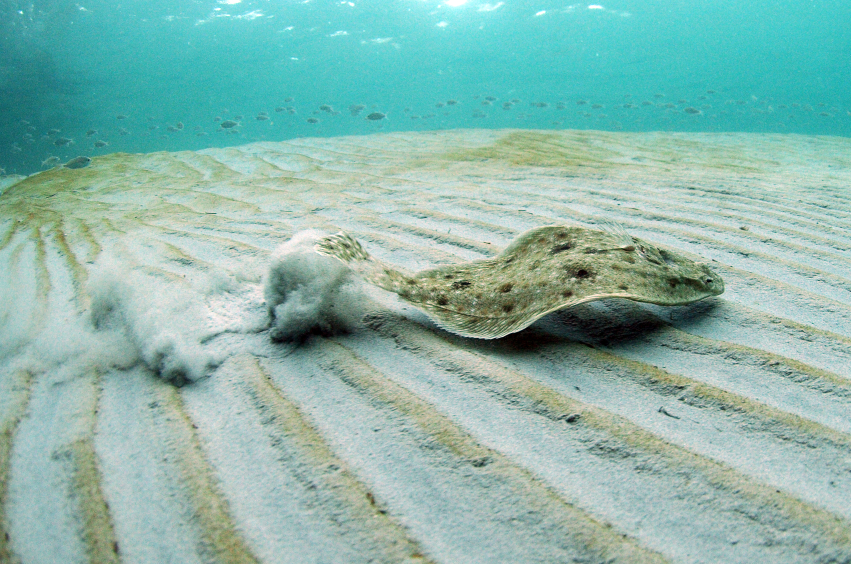By Christina Albright-Mundy
Thanks to Disney’s 1989 film “The Little Mermaid,” many people think of flounder as yellow and blue, bilateral tropical fish. In reality, flounder are not nearly as colorful (or cute) — with the exception of the peacock flounder — and many have found their way onto a dinner plate.
Flounders belong to the order Pleuronectiformes, which is most commonly referred to as the flatfishes. There are 500 species in this classification, including halibut and sole. With regard to the flounder, there are six known species. These peculiar-looking animals are known for their flat bodies and their migrating eye. When flounder first hatch, they appear as most other fish, with one eye and one nostril on each side of their head. When they reach about 1 centimeter in length, one eye and one nostril will begin to migrate to the other side of their head — which eye migrates depends on which species the animal is. Because of this migration, the animal’s mouth becomes twisted, giving it a downturned and unpleasant appearance. It should be noted that this mouth is also full of teeth, capable of inflicting a nasty bite should the animal be inclined. The rest of the flounder’s body is also changing while its eye is migrating. Their bodies become flatter, as if they have been compressed under a great weight. The half of their body that is void of facial features becomes pale, whereas the other half darkens to shades of brown to match the surrounding substrate. The animals further camouflage themselves by developing several tan spots on the exposed half of their body. During this metamorphosis, flounder do retain a set of gills along the underside of their body; when they’re buried in the substrate, they will pump water over their lower gills and expel it from their upper gills.
The flounder’s anal and dorsal fins both contain spines; another row of spines runs from the pectoral fin to the anal fin. Some species of flounder are able to camouflage themselves by changing their body coloration, as well as their pattern, thanks to the presence of chromatophores in their skin cells. When fully grown, a flounder can reach almost 7 pounds in weight and 20 inches in length. These nocturnal hunters attain this size by snacking on mollusks, shellfish, small fish and marine worms. Flounder can live to be 20 years old if they’re able to avoid any run-ins with eels, humans, large fish, marine mammals and sharks.
All flounder species are saltwater fish with the exception of the black flounder, which spends its life in freshwater. The coastal waters of the Atlantic and Pacific Oceans and accompanying estuaries are popular locations for these animals. They can be found at depths from a few inches to the deepest locations on earth. In 1960, Swiss scientist Jacques Piccard and United States Navy Lieutenant Don Walsh traveled to the depths of the Mariana Trench, almost 7 miles below the surface of the Pacific Ocean. In the near-complete darkness of the hadopelagic, or trench, zone and with 8 tons of water pressure per square inch, the two explorers were surprised to see life; life which included flounders and their cousin, sole.
Currently, flounders are not listed on the IUCN Red List, nor are they listed on the CITES appendices; however, the reduction in their population is staggering. In 2003, it was estimated the population of flounders was at 10 percent of what it was prior to the Industrial Era. Overfishing is the number one cause of decline, followed by pollution and capture as bycatch.


